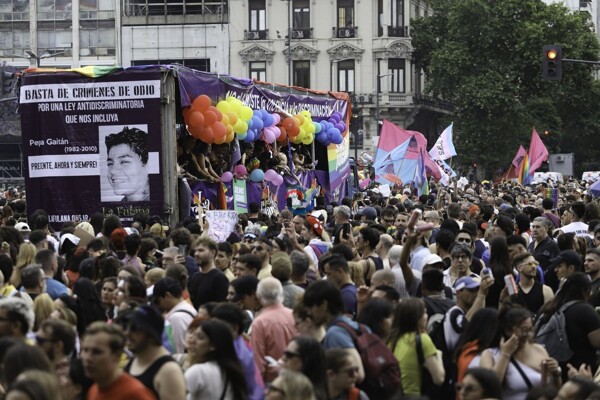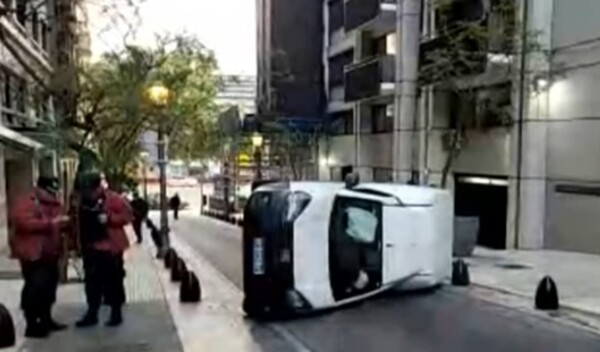
It is of little use to improve all pre-hospital and hospital steps by the health system actors if the population does not recognize the symptoms or makes a prompt call to the ambulance. Therefore, the first reflex must be to call the emergency service, and if for some reason it is not the most convenient, go to a center prepared to handle strokes, which is probably not the closest one, warned Dr. Matías Alet, a neurologist and staff member at FLENI.
Dr. Alet, head of the Stroke Unit at Hospital Ramos Mejía, added: "Nowhere in the world is it necessary for all health centers to have the same level of complexity to provide all services. However, the complexity and resources required are greater, and the chances of a full recovery decrease drastically with the passage of time," expressed the doctor.
The study also revealed that half of Argentines believe ambulances take too long, and 38% consider it faster to travel on their own, leading to decisions that potentially involve greater risk or are negative. Despite the lack of practical information, 90% of Argentines believe that recovery is possible if the stroke is treated in time, which shows a well-founded hope, although not always accompanied by appropriate behaviors: 6 out of 10 surveyed would not know or are not sure how to act if someone around them shows symptoms of a stroke.
Prevention and Risk Perception 77% consider it possible to prevent a stroke through: periodic medical check-ups (71%), stress control (70%), physical activity (64%), adequate rest (57%), and a balanced diet (56%). However, younger people and lower-income sectors remain less informed and prepared to act in an emergency.
So that more people are aware of the risks of stroke and learn to identify it and act with speed, this Wednesday an awareness event will be held in Buenos Aires, at Diagonal Sáenz Peña and Cerrito, in front of the Obelisk, from 10 to 17, with the installation of a giant clock to remember the time-dependent nature of this disease, and an interactive booth to record and share via social media awareness messages, in addition, informative leaflets will be distributed.
A new national survey revealed that, although most Argentines recognize the severity of stroke and believe it can be prevented, there are still significant knowledge gaps on how to act in the face of its symptoms. Seven out of ten people say they know what a stroke is, but only 38% feel prepared to react correctly in a nearby case, and four out of ten are unaware that treatment must be started as soon as possible within the first 4 and a half hours to avoid serious sequelae or death.
The survey was conducted by the consultancy Voices during September 2025 through an online survey of 806 men and women over 16 years old, residents in CABA, GBA, Córdoba, Rosario, Mendoza, and Tucumán, and the study investigated perceptions, knowledge, and attitudes towards stroke, a disease that is among the leading causes of disability and death in adults, but that can be prevented and often effectively treated if acted upon in time.
8 out of 10 Argentines recognize being concerned about their risk of suffering a stroke, especially women, people over 35, and people with fewer resources, however, when asked how they would act in an episode, 3 out of 4 would choose to go to the closest health center, against only 17% who would prioritize one appropriately prepared for the stroke approach, even though these centers are the only ones with personnel, equipment, medication, and protocols to perform the necessary interventions.
This is explained because 55% of the population believes that any hospital can treat a stroke.
"A stroke is a time-dependent medical emergency. The effective communication that takes place before arriving at the hospital allows the protocol with the available scanner and stroke team prepared to complete the diagnosis and provide the necessary treatments to decrease the sequelae and mortality caused by the disease".
The Need for More Information Although 69% consider themselves informed about the disease, only a third knows rules or indicators to quickly identify the symptoms, such as the "FAST" rule (face, arm, speech, and time, by its English acronym), which refers to signs that appear from one moment to another, such as numbness in part of the face, weakness in one of the arms, confusion or speech disorders, and the fact that it is time-dependent. Among the signs that allow suspecting the presence of a stroke most mentioned by people in the survey are sudden confusion, intense headache, difficulty speaking or understanding, paralysis or muscle weakness, and increased blood pressure.
It is not enough to know that it is important to lead a healthy life or to recognize that stroke is serious: we must learn to identify it and act in a matter of minutes. What is key is to articulate so that each person is referred in a timely and correct manner to the right center to receive the care they require".
On this point, Dr. Adolfo Savia, emergency physician and intensivist, President of the Emergency Council of the Argentine Society of Medicine and Medical Director of the Otamendi Rehabilitation Clinic, explained: "In different districts of the country such as CABA, Córdoba, Mar del Plata, Mendoza, Neuquén, Salta, and Tucumán, work has been underway on the collaborative articulation of stroke networks, so that the community can quickly identify the signs of stroke and call the medical emergency service".
Likewise, he added that the aforementioned service doctors are "those who will quickly confirm the diagnosis, perform initial stabilization and define to which appropriately prepared health center the patient suffering a stroke must be transferred so that they receive the specific treatment in the shortest possible time. Irrecoverable time is lost, and time is brain", concluded Dr. Alet.
This initiative seeks to make the problem of stroke visible by involving the community. "We need to transform consciousness into action. Even within that 'window' of time, the sooner the treatment is administered, the better the results, with fewer sequelae, so acting quickly from recognition and requesting help is key and there the community has a fundamental role".
"After that period, there are still treatments, including in some cases procedures such as mechanical thrombectomy (a brain catheterization that allows removing large clots). However, still 5% of those surveyed could not identify any".
"Early detection and immediate approach are key to preventing death and irreversible neurological damage, in the form of sequelae in speech, sight, autonomy for displacement, swallowing and even in the most basic actions of daily life. Campaigns must transmit this message in a clear, constant, and close way. The most frequent treatment is with a fibrinolytic drug (a drug that dissolves a clot formed in one of the brain's arteries)", described Dr. Savia.
The specialist added: "This treatment must be started within the first 4 and a half hours from the onset of symptoms or from the last time they were seen normal. Each minute without treatment is equivalent to the loss of 2 million neurons."













